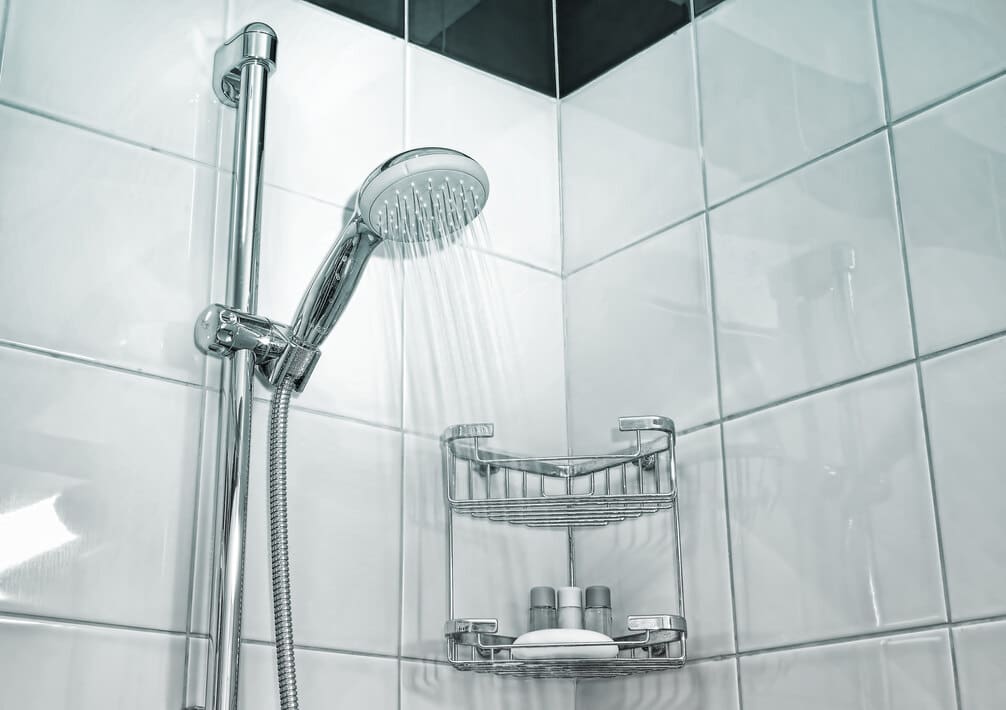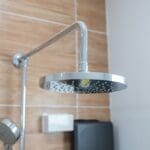You might not be aware, but a loose shower head holder can significantly affect your daily shower experience, leading to water spraying in unintended directions and potentially causing water wastage. Fixing this issue is simpler than you might think and doesn’t always require a call to the plumber.
By following a structured approach—starting with assessing the problem, gathering the necessary tools, tightening the holder, testing its stability, and applying sealant if needed—you can secure your shower head holder back in place. This not only ensures a more pleasant shower experience but also helps in conserving water.
Let’s dive into the first step to understand how you can assess the problem and identify the right tools for the job, ensuring you’re well-prepared to tackle this common but often overlooked issue.
Key Takeaways
- Assess the shower head holder for damage or misalignment.
- Use the appropriate tools for tightening or adjusting the holder.
- Test the stability of the holder by applying pressure and shaking it.
- Apply sealant if necessary and allow it to fully cure before testing stability again.
Assess the Problem
Identifying the cause of your loose shower head holder is the crucial first step in resolving the issue. To effectively assess the problem, you’ll need to carefully examine your shower head holder for any signs of damage or broken parts.
Start by gently pulling the trim ring away from the wall, which will allow you to see if there’s any deterioration or if the screw that holds the holder in place has loosened over time.
Next, check the adhesive or friction mechanism inside the holder, as these components are vital for keeping your shower head secure. If the adhesive has worn out or if the friction grip isn’t strong enough, this could be the reason why your shower head feels wobbly.
It’s also important to ensure the holder is correctly positioned. A misaligned holder can cause unnecessary stress on certain parts, leading to looseness.
Gather Necessary Tools
Before tackling the task of tightening your loose shower head holder, it’s essential to gather all the necessary tools you’ll need for the job. Fixing a shower head that’s come loose from the wall isn’t just about tightening screws. You’ll need a few specific items to ensure the job is done right and that your shower head remains securely in place.
Here are the tools you should gather:
- Adjustable Wrench: This will be crucial for tightening or loosening nuts around the pipe. Ensure it’s the right size to avoid damaging the fittings.
- Screwdriver: Depending on your shower head holder, you might need a flat-head or Phillips screwdriver to adjust the screws that hold the bracket in place.
- Masking Tape: Wrap this around the jaws of your wrench. It’ll prevent scratches on the shower head or the wall during the tightening process.
- Plumber’s Tape: After securing the holder, wrapping plumber’s tape around the pipe threads before reattaching the shower head can help prevent leaks.
Gathering these tools beforehand will streamline the process, making it easier and quicker to fix your shower head securely.
Tighten the Holder
Once you’ve gathered all the necessary tools, it’s crucial to start by tightening the screws or clamps on your shower head holder to secure it firmly in place. This step is fundamental in ensuring the shower head stays mounted, away from the wall, and doesn’t sag or droop during use. By securely holding the shower head, you’ll prevent it from moving unexpectedly and maintain the desired direction of water flow.
If the holder still moves or feels loose after you’ve tightened everything, consider wrapping electrical insulation tape or duct tape around the part that protrudes from the wall. This added layer can provide extra grip and stability, preventing the holder from slipping down or moving out of position. For holders that seem stuck or difficult to adjust, applying a bit of WD40 or another lubricant can make a significant difference. It’ll not only loosen any stuck parts but also facilitate smoother movement when adjusting the angle or position of the shower head.
In cases where the holder is broken or damaged beyond repair, replacing it might be the best course of action. However, if you’re uncertain about how to proceed or need assistance ensuring everything is back into place securely, don’t hesitate to seek professional help from a plumber.
Test Stability
After tightening the screws and ensuring the holder’s grip, it’s crucial to test its stability by applying pressure to see if it remains steady and secure. Now that you’ve worked hard to fix your loose shower head holder, you’ll want to make sure it stays put. Here’s how:
- Apply Pressure: Gently push down on the shower head to test its resistance. If the holder doesn’t move or wobble, you’re off to a good start.
- Adjust the Angle: Try changing the angle of the shower head within its holder. It should smoothly adjust and stay in the desired position without any sagging.
- Move Side to Side: Carefully move the shower head side to side. This simulates the everyday motion and use. A stable holder will keep the shower head firmly in place.
- Pull and Shake Test: Finally, pull gently on the shower head and shake the holder a bit. This ensures that even under some force, the holder holds the shower head securely without coming loose.
If your shower head and its holder pass these tests, you can be confident that your fix was successful. This way, you can enjoy your showers without worrying about a wobbly shower experience.
Apply Sealant (If Needed)
If your shower head holder still feels a bit unstable despite tightening, applying a sealant might be the next step to ensure it stays securely in place. Before you start, make sure the area around the holder is clean and dry. This will help the sealant adhere better to the wall and the holder.
Select a waterproof sealant designed for bathroom use. Carefully apply the sealant around the base of the holder where it meets the wall. Use a steady hand to create a smooth, even layer. If you’re not confident in your ability to apply the sealant neatly, you can use painter’s tape to mask off the area around the holder. This will help keep your lines clean and prevent the sealant from spreading to unwanted areas.
After applying the sealant, give it at least 30 minutes to set before testing the holder’s stability again. However, for the best results, it’s recommended to allow the sealant or foam to cure fully according to the manufacturer’s instructions, which could take up to 24 hours.
Frequently Asked Questions
How Do You Tighten a Shower Head Holder?
To tighten a shower head holder, first identify the cause, like a loosened ratchet. Apply adhesive for grip, tighten the screw while setting the angle, or consider a new holder or professional help.
How Do You Fix a Loose Shower Head?
To fix your loose shower head, first identify the cause, like a loosened mechanism. Apply adhesive for extra grip, tighten any screws, and adjust the angle. If it’s still loose, consider a replacement or seek professional help.
How Do You Secure a Shower Head Flange?
To secure a shower head flange, first ensure it’s clean and dry. Then, apply plumber’s tape around the pipe threads before screwing the flange on tightly. This’ll prevent water leaks and keep it securely in place.
How Do You Replace a Shower Head Holder?
To replace your shower head holder, start by removing the old one, either by loosening the set-screw or unscrewing the bayonet fitting. Then, secure the new holder in place by tightening the inside screw.





